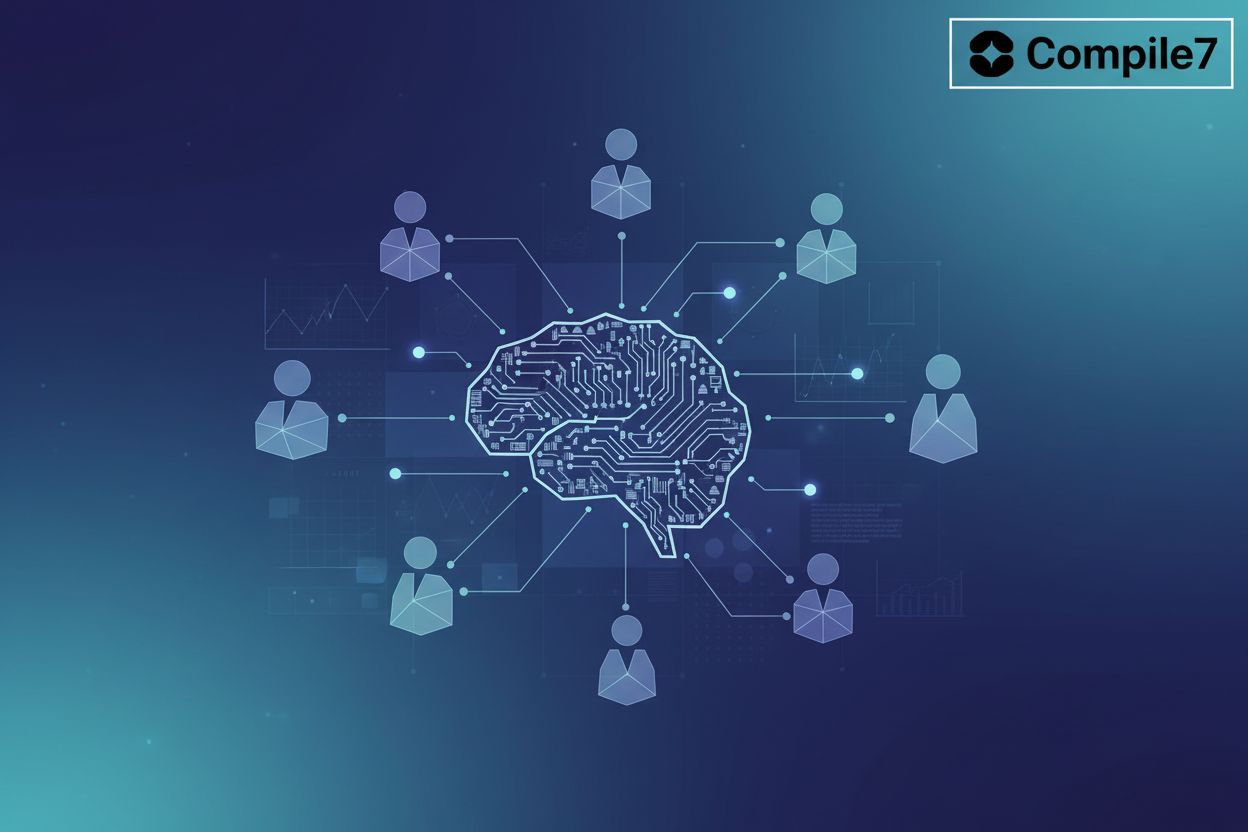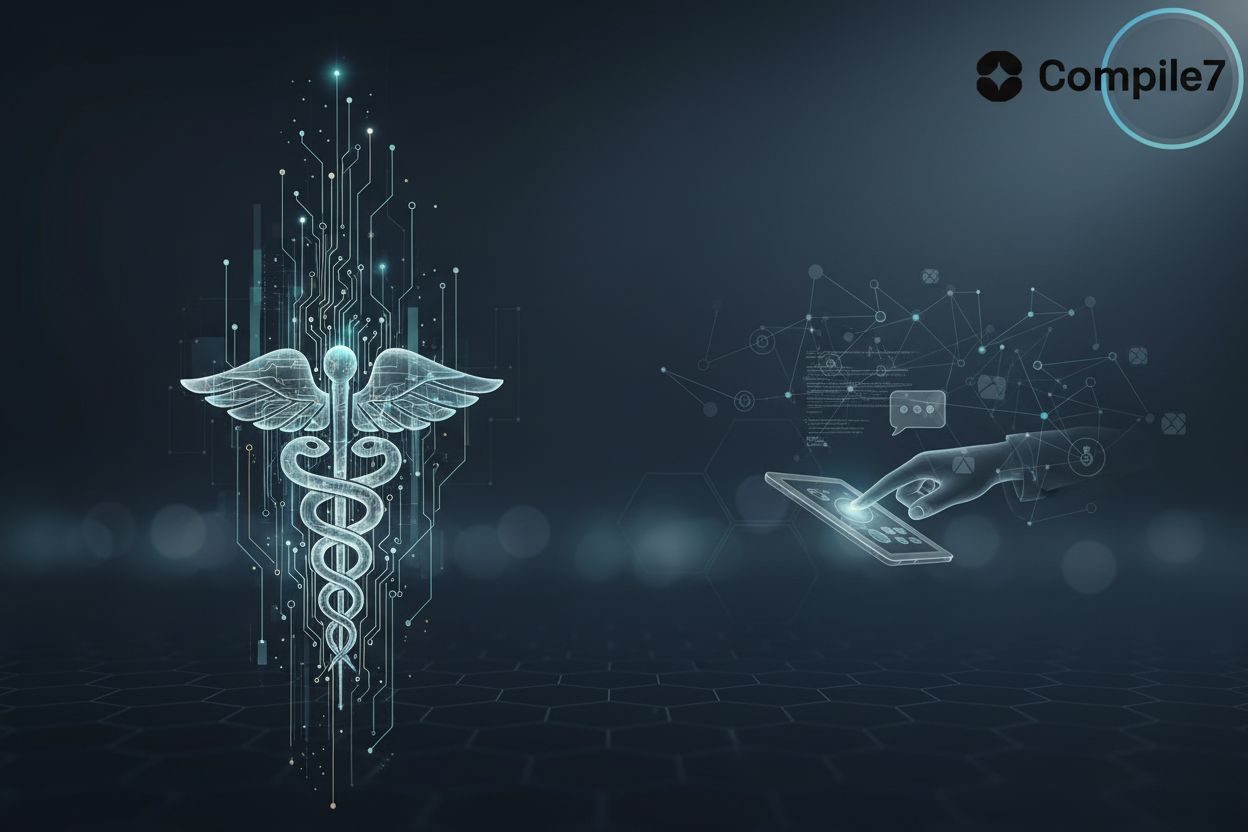Revolutionizing Business with AI-Driven Natural Language Generation
TL;DR
Introduction to AI-Driven Natural Language Generation
AI-driven Natural Language Generation (NLG) is transforming how businesses communicate. But what exactly is it, and why should you care?
NLG is a subfield of ai. It focuses on translating structured data into human-readable text. Think of it as the opposite of Natural Language Understanding (NLU), which interprets text. NLG generates it.
- NLG automates report writing in finance, providing insights from complex datasets.
- Retailers use NLG to create personalized product descriptions, enhancing the customer experience.
- Healthcare organizations generate patient summaries, improving communication and care coordination.
NLG has evolved significantly over the years. Early systems relied on rule-based approaches. Today's systems leverage machine learning and deep learning for more sophisticated results.
- Machine learning algorithms enable NLG systems to learn from vast amounts of text data, improving accuracy and fluency.
- Deep learning models, like transformers, allow NLG to generate more coherent and contextually relevant content.
- Current state-of-the-art NLG can produce text that is nearly indistinguishable from human-written content.
As ai continues to advance, NLG will become even more powerful. Next, we'll examine how NLG works in practice.
How NLG Works in Practice
So, how does this magic actually happen? NLG systems take structured data – think spreadsheets, databases, or sensor readings – and transform it into human-like text. It's a multi-step process, but here's a simplified look at it:
- Data Analysis and Interpretation: The NLG system first analyzes the input data to identify key patterns, trends, and insights. It's like a smart reader that understands what the numbers or facts are telling it.
- Content Planning: Based on the analysis, the system decides what information is most important to convey and in what order. This is where it plans the "story" it's going to tell.
- Sentence Generation: The system then constructs sentences that express the planned information. This involves choosing the right words, grammar, and sentence structures to make the text flow naturally.
- Text Realization: Finally, the generated sentences are put together into a coherent paragraph or document, ensuring it reads smoothly and makes sense.
This process allows NLG to create everything from simple status updates to complex financial reports, all based on the data it's given.
Applications of NLG Across Industries
Imagine turning complex data into compelling stories instantly. Natural Language Generation (NLG) makes this a reality, driving efficiency and insight across various industries.
NLG enhances customer service through ai-driven interactions.
- Chatbots and virtual assistants use NLG to provide personalized and human-like responses. This improves customer satisfaction and reduces the workload on human agents.
- Personalized communication ensures each customer receives tailored information. This creates a more engaging and relevant experience, fostering stronger customer relationships.
- Automated FAQs address common queries instantly. This provides quick solutions and improves overall customer service efficiency.
NLG converts raw data into understandable narratives, simplifying complex information.
- Automated reports and summaries extract key insights from large datasets. This saves time and helps decision-makers grasp critical information quickly.
- Explanation of data trends simplifies complex analytics. This enables stakeholders to understand patterns and make informed decisions.
- Business intelligence applications use NLG to present data in a user-friendly format. This supports better strategic planning and operational improvements.
NLG automates and personalizes content, optimizing marketing efforts.
- Generating articles and blog posts frees up time for creative tasks. It also ensures a steady stream of engaging content.
- Personalized content for audience segments improves engagement. Tailoring messages to specific groups increases relevance and impact.
- Automated content optimization for SEO boosts visibility. NLG can create content that ranks higher in search engine results.
NLG optimizes internal processes by automating report generation and document summarization.
- Automated report generation provides timely insights into business performance. It supports faster and more informed decision-making.
- NLG in process automation streamlines workflows. It reduces manual effort and improves overall efficiency.
- Ai-driven document summarization extracts key information from lengthy documents. This saves time and improves information accessibility.
NLG's ability to transform data into understandable text has broad implications. Next, we'll look at how NLG is enhancing customer service interactions.
Enhancing Customer Service Interactions with NLG
NLG is a game-changer for customer service, making interactions smoother, faster, and more personalized. It's all about using ai to make things better for both the customer and the business.
- Instant, Accurate Responses: Chatbots powered by NLG can understand customer queries and provide immediate, relevant answers. This means no more waiting on hold for simple questions.
- Personalized Support: NLG can analyze customer data to tailor responses and recommendations. This makes customers feel understood and valued, leading to higher satisfaction.
- 24/7 Availability: ai-driven customer service never sleeps. Customers can get help anytime, anywhere, which is a huge plus in today's always-on world.
- Reduced Agent Workload: By handling routine queries, NLG frees up human agents to focus on more complex or sensitive issues, improving overall service quality.
Essentially, NLG helps create a more efficient and customer-centric support experience.
Key Benefits of Implementing AI-Driven NLG
AI-driven Natural Language Generation (NLG) is no longer a futuristic concept. It's a present-day solution that unlocks significant business advantages. Let's explore how NLG implementation can revolutionize your operations.
NLG dramatically boosts efficiency by automating content creation. This means less time spent on manual tasks and more time for strategic initiatives.
- Finance departments can automatically generate detailed reports, freeing analysts to focus on interpreting data, rather than compiling it.
- Marketing teams can produce personalized email campaigns at scale, increasing engagement without manual effort.
- AIvril: AI-Driven RTL Generation With Verification In-The-Loop shows how ai streamlines complex tasks, enhancing productivity.
NLG ensures consistent messaging across all platforms, reducing the risk of human error. This is particularly vital in regulated industries.
- Healthcare providers can generate standardized patient summaries, improving communication and reducing discrepancies.
- Retailers can maintain uniform product descriptions across multiple e-commerce sites, enhancing brand image.
- Data-driven content generation minimizes inaccuracies, ensuring reliable information.
NLG enables businesses to create tailored content for individual customers, boosting relevance and engagement.
- E-commerce sites can generate personalized product recommendations, increasing sales and customer satisfaction.
- Customer service chatbots can provide tailored responses, improving the overall customer experience.
- According to The 24 Best Natural Language Generation Software Of 2025, NLG enhances customer interaction by making technology feel more intuitive and human-centered.
Implementing AI-driven NLG offers substantial benefits, from increased efficiency to improved personalization. Next, we'll examine how NLG can lead to significant cost reduction.
Significant Cost Reduction with NLG
One of the most compelling reasons businesses adopt NLG is its potential for significant cost savings. Automating tasks that were once manual and time-consuming directly impacts the bottom line.
- Reduced Labor Costs: By automating report generation, content creation, and customer service responses, businesses can reduce the need for large teams dedicated to these tasks. This frees up budget and allows for reallocation to more strategic areas.
- Increased Productivity: When employees are no longer bogged down by repetitive writing or data compilation, they can focus on higher-value activities. This boost in productivity means more output with the same or fewer resources.
- Minimized Errors: Human error in data entry or report writing can be costly, leading to rework, incorrect decisions, and even compliance issues. NLG systems, when properly configured, are highly accurate, reducing these costly mistakes.
- Faster Time-to-Market: For marketing and product teams, NLG can drastically speed up content creation. This means getting campaigns out faster, launching new products quicker, and responding to market changes more rapidly, all of which can translate to increased revenue and reduced opportunity costs.
By streamlining processes and improving accuracy, NLG offers a clear path to operational cost reduction and improved financial performance.
Tools and Technologies for AI-Driven NLG
AI-driven Natural Language Generation (NLG) is rapidly changing how we create content. But to harness its full potential, you need the right tools. From software platforms to open-source libraries, here's a look at the technologies driving this revolution.
Several robust NLG software platforms are available. These platforms offer varying features and capabilities that cater to different business needs.
- Automated Insights provides customizable content generation. It is suitable for various applications, from finance to marketing.
- Yseop specializes in financial and pharmaceutical reporting. It delivers precise and detailed narratives from complex data.
- Retresco focuses on enterprise content automation. It helps businesses manage and transform vast amounts of data into meaningful content.
Pricing models for these platforms often vary. Typically, pricing is customized based on the scale of use and specific features required. You might see subscription-based models, where you pay a recurring fee for access, or per-usage pricing, where costs are tied to the volume of content generated. Some platforms also offer enterprise licenses for larger organizations with specific needs.
Large Language Models (LLMs) are also a key component in AI-driven NLG. These models can generate human-like text with impressive coherence.
- Models like GPT-3 and GPT-4 can be leveraged for NLG tasks. They offer advanced text generation capabilities.
- LLMs can be fine-tuned for specific business needs. This ensures generated content aligns with brand voice and industry standards.
- Accuracy and reliability are key considerations when using LLMs. Ensuring proper validation and context is crucial for dependable results. For example, you might validate LLM outputs by cross-referencing generated facts against a known, trusted knowledge base or implementing confidence scores to flag potentially unreliable statements.
Open-source libraries and frameworks provide flexibility and control over your NLG solutions. They allow for customization and integration with existing systems.
- NLTK and spaCy are popular libraries. They offer a wide range of tools for text processing and generation.
- Customizing NLG solutions with open-source tools allows tailoring. This helps to meet specific business requirements.
- The benefits of flexibility and control make these libraries attractive. They are a choice for organizations seeking more hands-on development.
As AI-driven NLG continues to evolve, these tools and technologies will become even more sophisticated. Next up, we'll explore how NLG can lead to significant cost reduction.
Implementing NLG: Best Practices and Strategies
Implementing AI-driven Natural Language Generation (NLG) can feel like navigating uncharted waters. However, with a clear strategy, you can steer toward success.
Define Clear Objectives: Identify specific business problems NLG can solve. For instance, automate personalized email campaigns to increase customer engagement. Set measurable goals and Key Performance Indicators (KPIs). Track metrics like click-through rates or customer satisfaction scores to gauge success. Align NLG initiatives with your overall business strategy. Ensure NLG projects support broader goals, such as improving customer retention or driving revenue growth.
Data Management is Key: Ensure data quality and consistency. Clean and standardize your data to avoid errors in NLG outputs. Integrate data sources for NLG. Connect your NLG system to relevant databases, CRMs, and other data repositories for real-time insights. Common integration methods include APIs, direct database connections, or data warehousing solutions. Potential challenges can include data silos, inconsistent formatting, and ensuring real-time data flow. Consider data security and privacy. Comply with regulations like GDPR and CCPA to protect sensitive information.
Model Training and Refinement: Fine-tune models for specific industries or use cases. For example, train a model on financial reports for accurate investment summaries. Continuously improve your models. Regularly update your training data to maintain accuracy and relevance. Address biases in NLG outputs. Monitor and correct any biases in the generated text to ensure fairness and inclusivity.
By focusing on these best practices, you can effectively implement NLG to transform how your business communicates. Next, we'll explore how NLG can lead to significant cost reduction.
Overcoming Challenges in AI-Driven NLG
AI-driven Natural Language Generation (NLG) isn't without its hurdles. Successfully navigating these challenges ensures you harness its full potential.
One significant issue is accuracy. NLG systems must generate factual and coherent text.
- Implement rigorous data validation processes to ensure the input data is accurate and reliable.
- Use rule-based systems to verify the output, cross-referencing facts against trusted sources. For example, if an NLG system generates a statement about a company's profit margin, a rule-based system could check if that margin falls within a predefined acceptable range or if it matches a figure from a verified financial report.
- Conduct human reviews of the generated content to catch errors.
Maintaining a consistent brand voice can also prove difficult. Ai must align with established brand guidelines.
- Create detailed style guides that define your brand voice.
- Fine-tune NLG models using brand-specific data.
- Regularly audit ai output.
Ethical considerations are paramount. Transparency, fairness, and data privacy must be at the forefront.
- Ensure transparency by disclosing ai-generated content.
- Implement bias detection and mitigation techniques.
- Prioritize data privacy and comply with regulations like GDPR.
Overcoming these challenges paves the way for responsible and effective NLG implementation. Our next focus will be on the future trends in AI-driven NLG.
Future Trends in Natural Language Generation
AI-driven NLG is set to redefine digital interactions. How will these advancements shape business communications in the coming years?
NLG models continue to evolve, pushing the boundaries of what's possible.
- Emerging architectures improve coherence and context understanding. This enables more human-like and engaging content.
- Accuracy and fluency are enhanced through advanced training techniques. The result is more reliable and natural-sounding text.
- Multilingual NLG breaks down communication barriers, allowing businesses to reach global audiences. This supports seamless content generation in multiple languages.
NLG's future lies in its integration with other ai domains, creating more versatile and intelligent systems.
- Combining NLG with computer vision enables automated descriptions of images and videos. This enhances accessibility and content understanding.
- Integrating NLG with speech recognition allows for real-time transcription and summarization of spoken content. This is valuable in meetings and customer service interactions.
- Multimodal ai solutions expand automation, offering more comprehensive and efficient workflows. This streamlines operations across various industries.
NLG will play a crucial role in shaping immersive digital experiences.
- Generating realistic virtual interactions makes digital environments more engaging. This transforms the way people interact in virtual spaces.
- Personalized experiences in virtual worlds are driven by NLG. Tailored content enhances user satisfaction and engagement.
- NLG-driven storytelling offers new creative possibilities in the metaverse. Ai can generate dynamic narratives that respond to user actions.
As NLG evolves, businesses can expect more sophisticated, efficient, and personalized communication solutions. This will drive innovation and improve user experiences across digital platforms.





